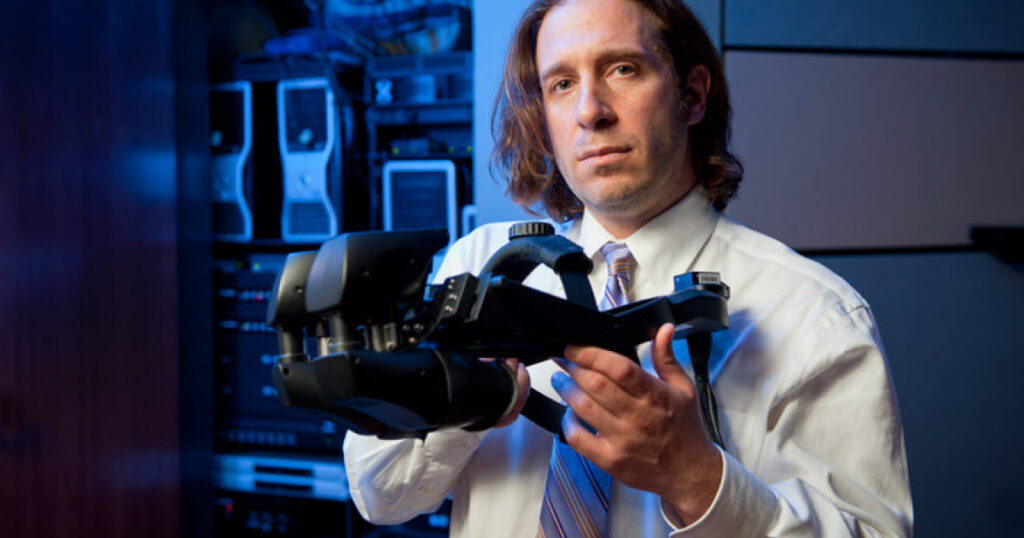In the constant evolution of immersive technologies, Jeremy Bailenson’s research is interesting, with the aim of illuminating the intricate relationships between virtual and augmented reality, human interactions, and social dynamics.

Jeremy Bailenson is the director and founder of the Virtual Human Interaction Lab at Stanford University. He studies the psychology of Virtual and Augmented Reality, in particular how virtual experiences lead to changes in the perception of self and others. He has contributed significantly to the development of virtual reality as a research tool and has explored a wide range of applications, including the use of VR to promote environmental awareness, improve communication, and address social issues.
The laboratory founded by him in 2003 seeks to better understand the psychological and behavioral effects of virtual reality and augmented reality. He is the author of numerous scientific papers and the book “Experience on Demand: What Virtual Reality Is, How It Works, and What It Can Do”, in which he explores the evolution of virtual reality technology and its implications for society. Through this book, Bailenson takes readers on a journey that traverses the multiple dimensions of virtual reality, outlining its applications and challenges with clarity. The book initially explains the fundamentals of virtual reality, revealing how this technology works. It then unveils its applications and the different sectors in which it can be used, including education, mental health, vocational training, and many more. It illustrates multiple cases where immersive technology can bring tangible benefits to people’s lives. A crucial aspect of the book refers to the psychological and social impact of virtual reality. On the other hand, his research is based precisely on this.
In a recent article “The Efficacy of Virtual Reality in Climate Change Education Increases with Amount of Body Movement and Message Specificity” https://www.mdpi.com/2071-1050/15/7/5814 he addressed the impact of climate change, proposing new strategies to encourage behaviors that address this issue. This study investigated how designing a virtual reality experience about ocean acidification could influence participants’ learning, behavior, and perceptions about climate change. The study was conducted in 17 locations such as museums, aquariums, and arcades in the United States, Canada, the United Kingdom, and Denmark. The study narratively linked virtual reality to ocean acidification by changing participants’ perceptions of the risks associated with this issue, which led to an increase in participants’ adoption of climate-friendly behaviors.
His studies on virtual presence, the use of digital avatars, and the plasticity of social interactions provide a critical framework for practical applications in various industries. In education, his research suggests innovative ways of engaging students through immersive experiences; In mental health, they open the door to digital therapies that harness the power of virtual reality. In conclusion, in a context where the barriers between the digital and the real are increasingly blurred, Jeremy Bailenson’s contributions emerge as pillars that support the deep understanding of the human implications of immersive technologies. Whether they are teachers, health professionals, artists, or technology innovators, the principles outlined in his studies are transformed into crucial guidelines for navigating the ever-changing world of virtual and augmented reality. Against this backdrop, Bailenson’s academic legacy continues to grow, shaping how we interact, learn, and connect in a digitally enriched world.
By Sara Votta